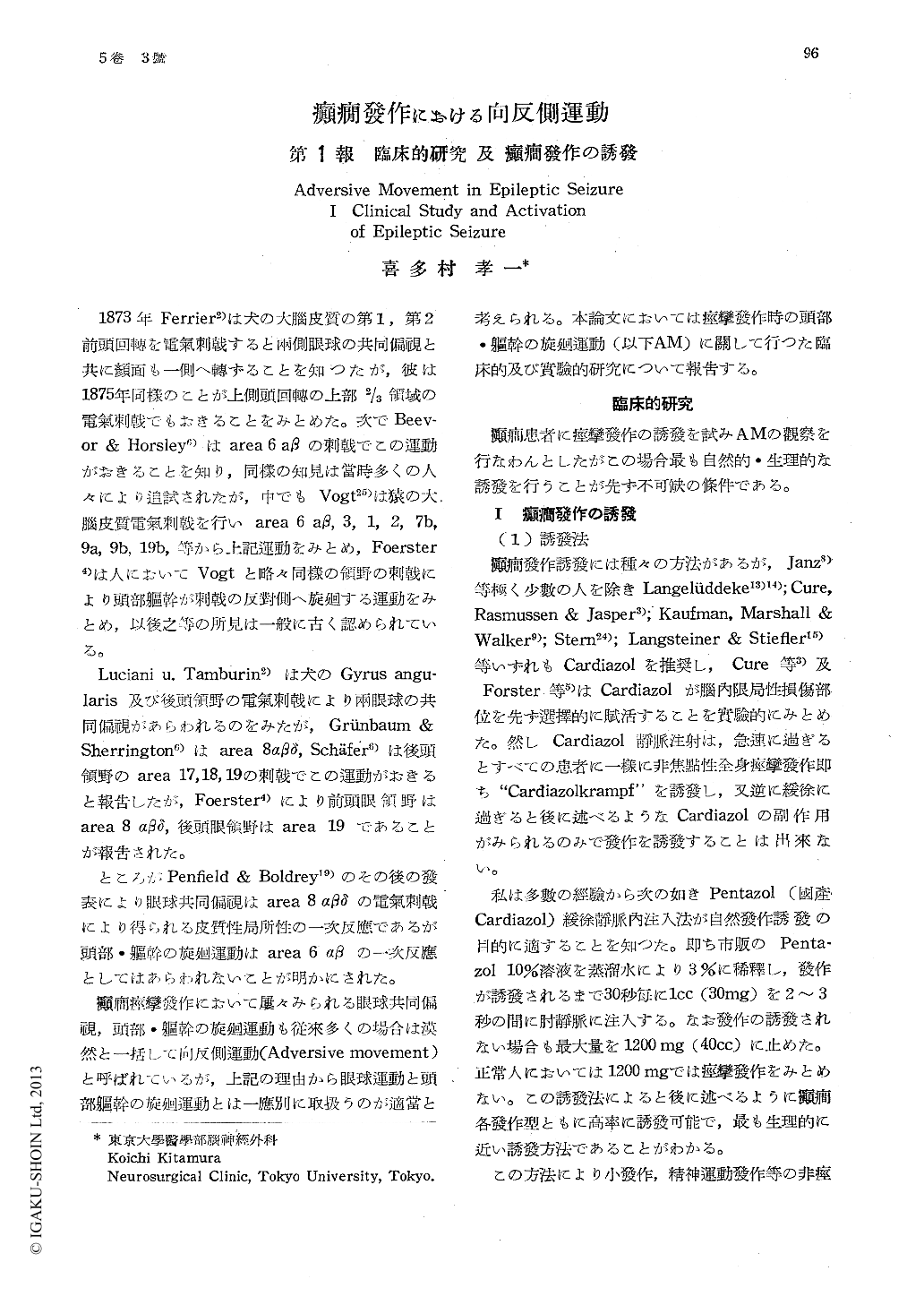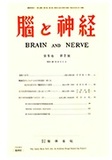Japanese
English
- 有料閲覧
- Abstract 文献概要
- 1ページ目 Look Inside
1873年Ferrier2)は犬の大腦皮質の第1,第2前頭回轉を電氣刺戟すると兩側眼球の共同偏視と共に顔面も一側へ轉ずることを知つたが,彼は1875年同樣のことが上側頭回轉の上部2/3領域の電氣刺戟でもおきることをみとめた。次でBeevor & Horsley6)はarea 6 aβの刺戟でこの運動がおきることを知り,同樣の知見は當時多くの人々により追試されたが,中でもVogt25)は猿の大,腦皮質電氣刺戟を行いarea 6 aβ,3,1,2,7b,9a,9b,19b,等から上記蓮動をみとめ,Foerster4)は人においてVogtと略々同樣の領野の刺戟により頭部驅幹が刺戟の反對側へ旋廻する運動をみとめ,以後之等の所見は一般に古く認められている。
Luciani u. Tamburin2)は犬のGyrus angularis及び後頭領野の電氣刺戟により兩眼球の共同偏視があらわれるのをみたが,Grünbaum & Sherrington6)はarea 8αβδ,Schäfer6)は後頭領野のarea 17,18,19の刺戟でこの運動がおきると報告したが,Foerster4)により前頭眼領野はarea 8αβδ,後頭眼領野はarea 19であることが報告された。
The adversive movement in the induced general convulsive seizure was studied in various types of epilepsy including grand mal, petit mal, psychomotor and focal cortical seizures.
The seizures were provoked by slow intravenousinjection of Pentazol (Pentamethylentetrazol, Cardiazol, Metrazol) solution at the speed of 30mg per 30 seconds. It was observed that this method of activation was the most physiological and natural one.
In this first report the material was a series of 67 cases admitted to the Neurosurgical Clinic of the Tokyo University.
a) The side towards which the adversive movement was directed changed frequently during a convulsive seizure.
b) In many epileptics, however, the dinection of the initial adversive movement was consistent in each induced seizure. This was true in all cases of focal cortical seizure, 80% of cases with petit mal or grand mal, and only 68% of cases with psychomotor epilepsy.
c) In the focal cortical epilepsy, the side towards which the initial adversive movement was directed was constantly opposite to the side of the focus, but in the induced convulsive seizures of psychomotor patients with focus in the unilateral anterior temporal region, the initial adversive movement was, in about 50% of cases, inconstant in direction.
d) Wherever epileptogenic foci might exist in the cerebral cortex except for the temporal region, the direction of the initial adversive movement was consistently opposite to the side of foci.
e) On the side towards which the initial adversive movement was directed, the constriction of the Peripherial vessel was seen by plethysmography.
f) Whether the loss of consciousness appeared prior to or after the onset of adversive movement had, in the authors cases, no definite correlation, such as Penfield, with location of foci in the cerebral hemisphere.

Copyright © 1953, Igaku-Shoin Ltd. All rights reserved.


